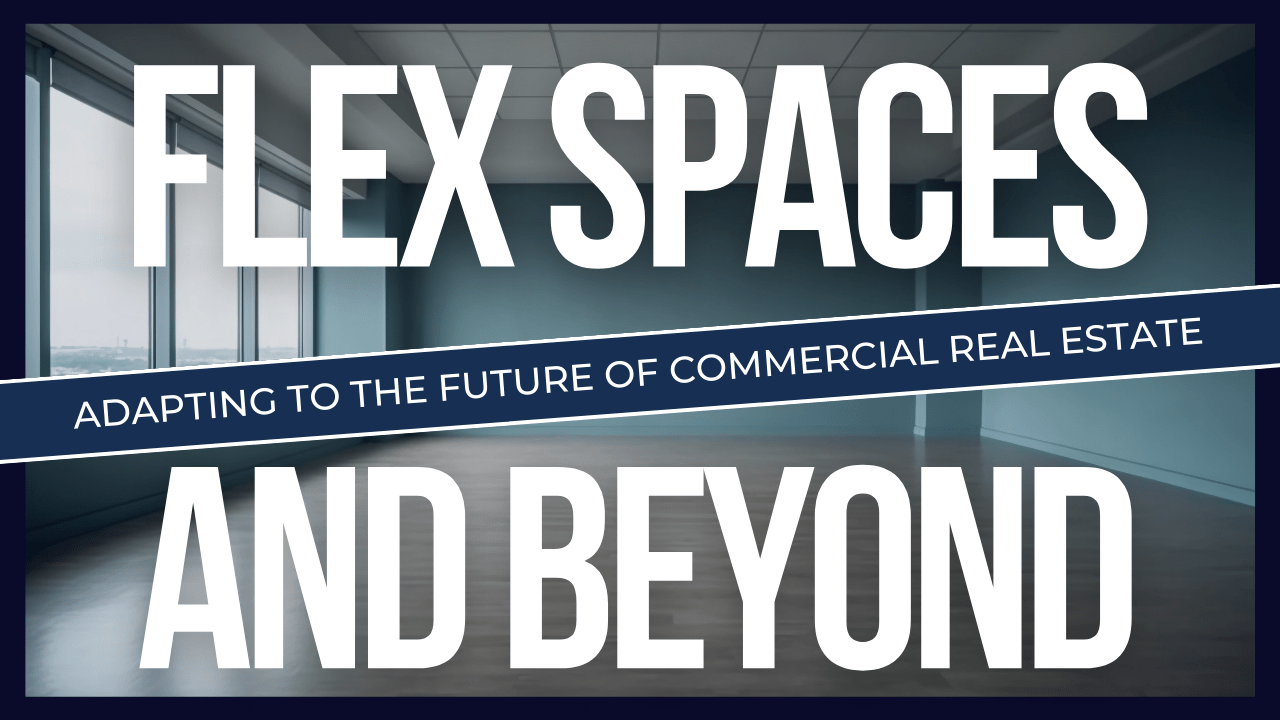The demand for flexibility has been growing for years, and we’re at a point now that convenience and freedom are often more important to people than money. Workers are more interested in remote positions that allow for flexible schedules, even if they don’t pay as much as those that require strict hours and an in-office presence. Tenants are willing to pay more for a lease term that allows them to leave earlier or stay longer.
Flexibility and convenience are no longer luxuries, they’re necessities.
This is true in commercial real estate (CRE) as well, particularly in the way you structure your Southern California properties and your lease terms.
Look at the rise of mix-used spaces in commercial real estate. One of the fastest growing segments of this industry is the community that provides for residential, retail, and commercial space. A Southern California commercial property might include condos, restaurants, shops, and offices that welcome local businesses.
The evolving work culture, driven by the rise of remote work and the increasing demand for work-life balance, is reshaping the foundation of commercial spaces in the modern real estate market. For investors, staying ahead of these trends means rethinking traditional models and exploring the potential of flex spaces and beyond.
As commercial property management and real estate experts in Los Angeles, Bell Properties has been studying this trend for years, and we’re helping our commercial clients adapt and navigate this important part of the market.
Understanding Flex Spaces in Southern California Commercial Real Estate
Flex spaces, as the name implies, are commercial properties that offer flexible leasing terms and multipurpose layouts. These spaces can easily adapt to various uses, from coworking and office spaces to retail, light manufacturing, and even warehousing. They might be next door to a residential building or within a community that has people living nearby.
The key feature that sets flexible spaces apart is their ability to cater to the shifting needs of tenants, offering them not just a place to operate, but a space that evolves with their business. When we talk about flex spaces, we might also mean unusual partnerships within one space. Imagine a hair salon that doubles as an art gallery, for example. Or, a bookstore sharing space with a laundromat. These are the types of creative coming-togethers that Bell Properties has seen in the Los Angeles commercial real estate space recently.
The Driving Forces Behind the Shift to Flex Space
Several factors contribute to the rising prominence of flex spaces in the commercial real estate sector:
Changing Work Patterns. The pandemic accelerated the acceptance of remote work, leading many companies to reconsider their need for traditional office spaces. You might remember that during the height of the pandemic, when almost all offices were sending their employees home, there was a lot of concern around the future of office spaces. They may look a little different now. Flex spaces offer an alternative that can accommodate hybrid work models, allowing businesses to scale up or down based on current requirements.
Economic Uncertainty. In times of economic flux, companies are wary of committing to long-term leases. Flex spaces provide the agility businesses need to navigate through uncertain periods, making them an attractive option for startups and established companies alike. They’re also more willing to share space. With costs rising and inflation squeezing a lot of small businesses, there’s a sense that sharing space is better than overspending on more than is needed.
Innovation and Collaboration. The collaborative environments supported by co-working spaces have proven beneficial for innovation. Flex spaces extend this concept by providing versatile environments that encourage networking and partnership across different industries. There has been a large increase in the number of co-working spaces that are available, and remote workers, entrepreneurs, and creative professionals are indicating that they’d like to have their own separate office space without investing in a property of their own. Shared spaces allow for more collaboration and innovation, which works well with this evolving demographic of commercial tenants.
The concept of flex spaces has become a big part of commercial real estate discussions. These creative environments cater not only to the changing needs of businesses but also to the evolving preferences of their workforce. Flex spaces, characterized by their versatility and adaptability, offer various amenities, including private offices, shared offices, conference rooms, and open environments that can accommodate everything from traditional office setups to creative studio spaces and everything in between.
Flex Spaces Make Companies More Competitive
This is a trend that’s business-driven. Smart companies are aligned with the demand of their customers, and employees are, essentially, customers. When companies are hiring talent, they want to be able to market themselves as a desirable place to work. Having the right space and/or set-up can be a big part of that marketing push for good employees.
The advent of hybrid work models and the increasing demand for work-life balance have propelled the popularity of flex spaces. Companies are now seeking real estate solutions that provide both the professionalism of an office for employees who thrive in that environment, and the flexibility to support remote work. This transition challenges the commercial real estate industry to reimagine traditional office spaces, making them more modular, technology-driven, and conducive to collaboration and creativity.
Keeping employees connected is a priority. The future of commercial real estate is not just about adapting physical spaces but also about leveraging technology to enhance connectivity, sustainability, and even health and wellness within these environments. Smart buildings, utilizing IoT devices and AI, can optimize energy use, improve air quality, and even personalize the work environment for individuals, promoting a healthier and more productive workspace. This will attract companies to your space who are trying to attract employees to their workforce.
The Benefits for Southern California Commercial Real Estate Investors
For commercial real estate investors, the shift towards flexible spaces requires that you’re prepared to think differently about your current commercial spaces and those that you might acquire in the future. You’ll find that while there may be challenges to meeting the needs of this shifting demographic of commercial tenants, there are also several opportunities:
Higher Demand. As businesses look for adaptable leasing solutions, properties offering flexibility will likely see higher demand, potentially leading to lower vacancy rates and more stable cash flows. You want tenants to be attracted to your commercial space, and if you’re looking for a competitive advantage in a crowded market, this is one way to increase the demand for spaces and buildings such as yours.
Diverse Tenant Base. Flex spaces attract a wide range of tenants, from freelancers and startups to multinational corporations, reducing the investor's dependency on a single tenant or industry. You can cast a wider net, and when you make some smart improvements and adjustments to a more flexible space, you’ll find that new and unexpected companies and proprietors may be interested in your space.
Premium Lease Rates. Tenants are often willing to pay a premium for the convenience of flexible terms and adaptable space, which can lead to higher returns on investment. This is an excellent way to increase what you’re earning in the short and long term.
Adapting Investment Strategies
 To capitalize on the growing trend of flex spaces, investors should consider the investment strategies that best serve their local tenant population.
To capitalize on the growing trend of flex spaces, investors should consider the investment strategies that best serve their local tenant population.
You’ll want to consider location. In Los Angeles, you may be renting out commercial space in a heavily trafficked area or in a more remote suburb. Leverage your location. Properties in urban centers or close to transportation hubs are particularly attractive for flex spaces, as they offer easy access for a diverse workforce.
Integrate technology. Investing in technology to enable the efficient operation of flex spaces, such as booking systems for meeting rooms or virtual receptionists, can enhance their appeal. Make things convenient for your commercial tenants and their customers.
Pay attention to design and layout why you’re investing in a new property or renovating an existing one. Properties that can be easily adapted to various uses without significant renovations are ideal. Think open-plan layouts, modular furniture, and shared amenities.
This is a trend that is going to continue evolving, so get comfortable with new innovations. Sustainability, wellness, and community-building are increasingly influencing tenant decisions. Investments in green buildings, spaces that promote health and well-being, and properties that encourage a sense of community are likely to define the next shift in commercial real estate.
The rise of flex spaces is indicative of a broader transformation in the commercial real estate sector, driven by shifting work cultures, economic uncertainty, and a focus on innovation. For investors, the willingness to adapt and rethink traditional property models is key to navigating this evolving landscape. By recognizing the potential of flex spaces and remaining flexible, you will find that you’re able to go beyond to position yourself as an investor who thrives in the future of Los Angeles commercial real estate.
Let’s talk about how to best position your commercial property in Southern California for success and the market continues to shift and tenant demands continue to evolve. Contact us at Bell Properties Commercial Real Estate.



